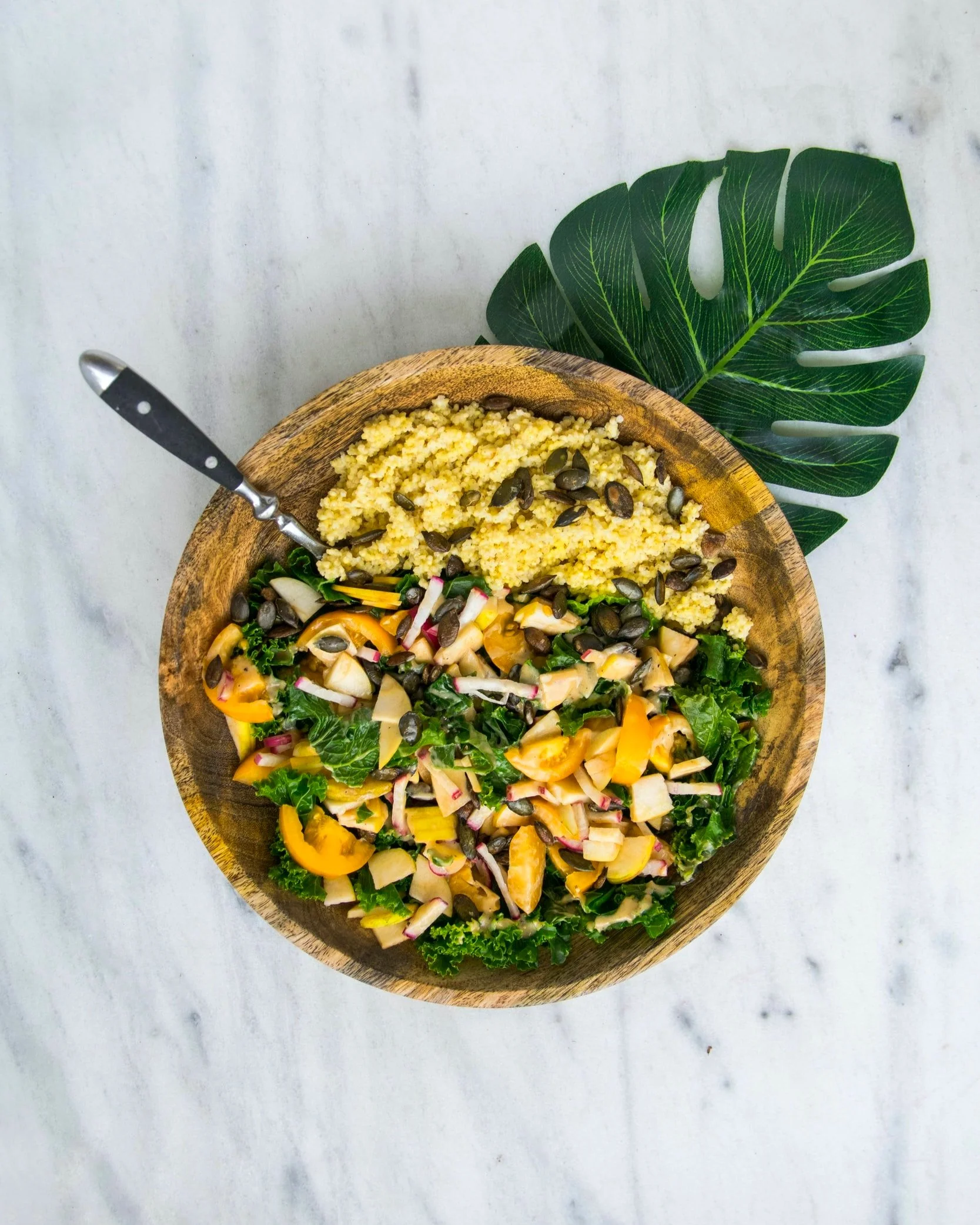The Proof Is In The Plants: Part 1
Hi, I'm Liz Moser, a Mayo Clinic and National Board Certified Health and Wellness Coach.
What I’m reading and getting into this week is The Proof Is in Plants written by Simon Hill, and cool side note and kudos to Simon, all the proceeds from the book are going to the non-profit Half-Cut, helping to save the Daintree Rainforest from deforestation.
Simon Hill is a physiotherapist who also has a master’s degree in nutrition. When Simon was a teenager, his dad suffered a severe heart attack. At the time, his father’s cardiologist told Simon he would have to ‘be careful in the future because he was genetically predisposed for heart disease. However, the doctor didn’t elaborate on what being careful meant. Discovering that on his own has been Simon’s life passion.
In The Proof is In the Plants, Simon’s central theme is eating a diet predominantly of whole plant foods, particularly 85% of your diet, is the ultimate key to health. So that's 85 percent whole-plant foods and a 15% combination of animal products like meat, cheese, fish, dairy, and processed food.
Given that framework of 85/15, it’s really up to you whether your overall diet adheres to a paleo, keto, Mediterranean, vegetarian, or an actual vegan diet. And yes, Hill stipulates, you can still choose the keto or paleo way of life while eating 85% plant foods.
The book is research-based, and he explains that there is no valid research that proves 100% whole food plant base improves your health over 85% whole food plant-based. Eating 15% a week of eggs, meat, dairy, or packaged processed foods has not been proven to harm your health over the long term.
That said, there are other reasons to choose a diet of 100% plants, such as the harmful impact livestock farming has on the environment and animal welfare. However, strictly from a health perspective; eating 100% plants will not significantly increase your health metrics over a diet of 85% plants.
Speaking of proper research, Simon includes a pyramid explaining the hierarchy of evidence in nutritional science. The pyramid shows how the risk of bias lowers as you move up the pyramid, and the quality of evidence increases as you move up the pyramid.
At the bottom of the hierarchy of evidence in science is expert opinion and case studies, so that has the highest risk of bias and the lowest quality of evidence. Then it moves up to laboratory studies, cross-sectional studies, case-controlled studies, cohort studies, randomized controlled trials, and then at the top is a meta-analysis and systematic reviews, which have the lowest risk of bias and the highest quality of evidence.
Another point of interest for me is Hill’s lipid panel chart showing LDL levels to atherosclerosis risk. The chart goes from zero risk atherosclerosis to one, 2-3, or the risk of 4-6 vascular sites.
For example, my last blood work test showed I had an LDL of 86, which is high for a 100% whole food plant-based eater, and I’m not thrilled about! Ha! This chart shows that I have a 24% risk of one vascular site, and I would have to lower my LDL to 50-60 ( which is typical for vegans) to reduce my risk of atherosclerosis to zero.
Therefore, while doctors consider an LDL of <100 mg/dl healthy, it pays to remember that taking averages from an unhealthy population isn't that helpful, not if we are striving for more years in good health.
A different pyramid that I love in this book is his plant proof food pyramid: On the bottom is fruits and veggies, so this needs to be the largest group of food eaten in your diet, next level up is legumes, tofu, and tempeh (a fermented soybean product that has a nutty texture.) The next level is fats and whole grains, and the point on top is meat products and processed food or the 15% or less of your healthy diet.
And lastly but not least, Hill has a 40 Per Week Challenge: that (drum roll please!) I’m suggesting should be our homework assignment for next week. Are you up for this?! Don’t worry we’ll do this together! 😊
The 40 challenge looks like this:
We’re going to record all the plants we eat this week, hoping they tally up to 30 different plants, and then we’ll list all the herbs and spices we consume, hoping they total up to 10 different kinds. Eating a diverse assortment of plants, Hill says the research shows is the key to health.
So, I'll see you next week, and we can then compare our 40 Per Week Challenge! It’s going to be fun!
My key takeaways from The Power Is In The Plants are: what kind of research makes a difference with expert opinions and case studies having the most bias and meta-analyses having the highest quality of evidence. Research shows a diet comprised of 85% plants promotes the most increased health, and then do what you want with the rest, whether it's paleo, keto or 100% vegan. An LDL around 50-70 is where you want to be if you wish to be close to a 0% risk of atherosclerosis. And finally, I hope you join me in the 40 Per Week Challenge this week: the goal being to consume thirty different plants plus ten different herbs and spices.
I’m Liz Moser, a Mayo Clinic and National Board Certified Health and Wellness Coach, and thank you for reading this blog about my key takeaways from the Proof Is In The Plants and the homework assignment of writing down all the different plants shooting for 40 different kinds. If you have any questions about this blog, health, wellness, or wellness coaching with me, please reach out via my website at lizmosercoaching.com.
Bye for now, and be well,
Liz





